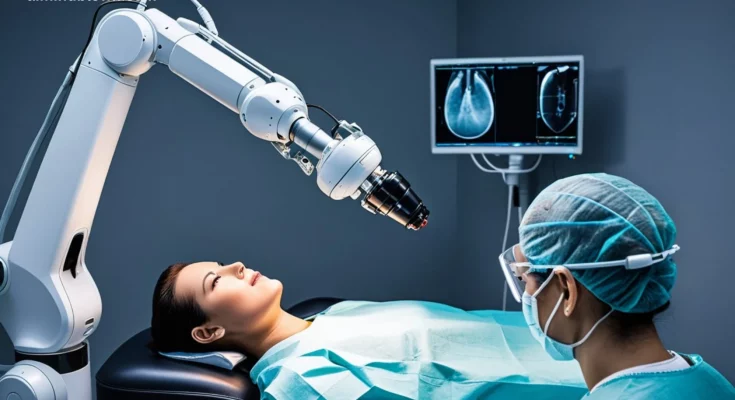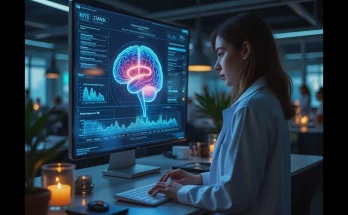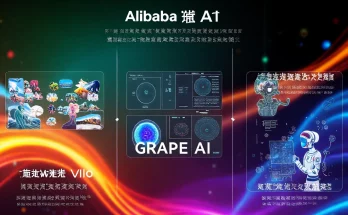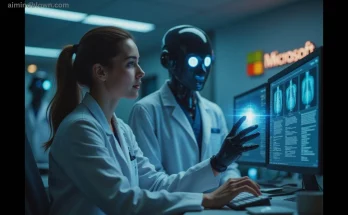The Role of AI in Healthcare
In an era where healthcare demands continuously exceed supply, the integration of artificial intelligence (AI) is becoming increasingly vital. Recognized as a pivotal area for technological application, the healthcare sector seeks to harness AI’s capabilities for a multitude of purposes, from enhancing patient care to streamlining operations. During Nvidia’s annual GTC conference in San Jose, the company unveiled groundbreaking collaborations aimed at revolutionizing robotic surgery and digital imaging through advanced AI technologies.
Introducing Isaac for Healthcare
Nvidia’s Isaac for Healthcare is a remarkable medical device simulation platform currently in early access that features pre-trained AI models designed to simulate various anatomical structures and sensor functionalities. This technology allows device manufacturers to test and validate their systems in a virtual environment, significantly enhancing the development process.
Nvidia’s Vice President of Healthcare, Kimberly Powell, encapsulated the urgency of AI in healthcare, stating, “The healthcare industry is one of the most important applications of AI, as the demand for healthcare services far exceeds the supply.”
Partnerships with Industry Leaders
As part of its initiative, Nvidia has partnered with several medtech companies, including GE HealthCare. GE plans to utilize the Isaac platform to construct autonomous imaging systems, including X-ray and ultrasound devices operated by robotic arms that utilize advanced machine vision technology to adapt to patient placements.
Roland Rott, GE HealthCare’s imaging president and CEO emphasized the transformative potential of these technologies: “We look forward to taking advantage of physical AI for autonomous imaging systems with Nvidia technology to improve patient access and address the challenges of growing workloads and staffing shortages in healthcare.”
Addressing Global Imaging Access Issues
Despite the efficiency of X-ray and ultrasound technologies, a shocking statistic reveals that nearly two-thirds of individuals globally lack access to these essential diagnostic imaging tools. This glaring gap presents a major challenge in delivering effective healthcare services, which Nvidia aims to address through its innovations and strategic partnerships.
- Physical AI: Leveraging AI technologies for basic imaging processes.
- Improved Access: Ensuring more patients can benefit from diagnostic imaging.
- Tackling Shortages: Alleviating the burden on healthcare staff through automation.
Innovative Applications of Isaac in Robotic Surgery
The promise of Isaac for Healthcare extends to various specific applications in robotic surgery. Several early adopters are already harnessing the platform’s capabilities:
- Moon Surgical: Utilizing Isaac for its Maestro robot, which is designed for advanced surgical procedures.
- Neptune Medical: Implementing Isaac for a gastrointestinal robotics approach.
- Xcath: Aiming to contribute to stroke treatment solutions through remote-controlled systems.
Anne Osdoit, CEO of Moon Surgical, elaborated on the capabilities of their system: “Instead of training our AI using real OR data, we’ll be able to simulate various OR environments and generate synthetic data, ultimately training our AI to understand and interact with the physical world around it.”
Nvidia’s Expanded Collaborations
To further hone its AI technologies, Nvidia has also engaged in collaborations with:
- Stereotaxis: An endovascular robot maker now included in Nvidia’s software development program called Nvidia Connect.
- Hyperfine: Focusing on AI image reconstruction for its portable Swoop brain MRI system.
These collaborations aim not only to enhance the developers’ capabilities but also to push the boundaries of what is possible with AI and robotics in surgery.
The Future of AI in Medical Technology
The implications of Nvidia’s AI innovations for the healthcare sector are enormous. As the integration of AI continues to evolve, we can expect several core benefits:
- Enhanced Efficiency: AI can streamline processes, making surgeries faster and more efficient.
- Increased Accuracy: Improved precision in diagnostics and surgical procedures.
- Accessibility: Greater access to advanced healthcare technologies for underserved populations.
The potential of AI-driven technologies in healthcare is vast, and Nvidia’s strategic partnerships are paving the way for a new era of medical advancements.
Conclusion
Nvidia’s commitment to advancing AI applications in robotic surgery and digital imaging is poised to revolutionize the healthcare landscape. The company’s collaborations with industry leaders like GE HealthCare and emerging medtech firms underscore the promise of transforming patient care, improving access to essential services, and alleviating workforce challenges in the healthcare sector.
The future indeed looks bright for AI in healthcare, marking a significant step towards a more efficient and effective medical ecosystem. As these technologies continue to develop, the hope is that more patients worldwide will benefit from the life-saving advancements these innovations can deliver.



